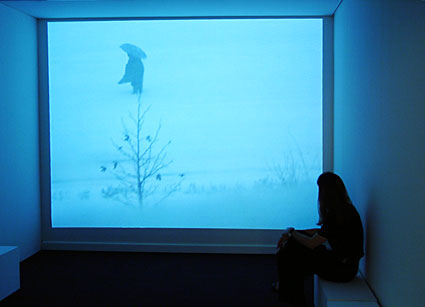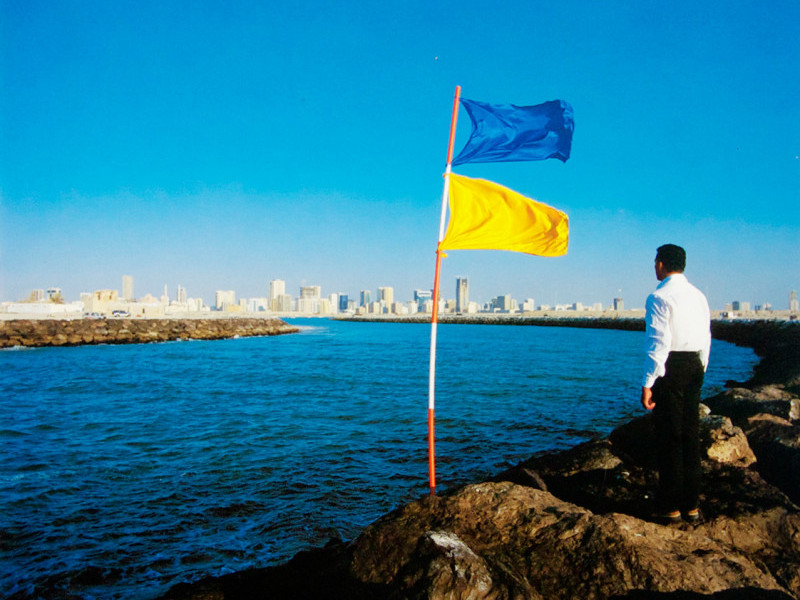

Overview
Note on Photography
I tell the caveman, "I see that through looking you have come to 'seeing', and this is what photography is." He asks, "What's photography?" "It is that same feeling you have captured with your eyes, that is if you can somehow preserve it." Before I can finish my sentence, he picks up a piece of charcoal from the ground, goes into the cave and begins to draw.
What a trick! This is only an outline. Can it be possible to see again all that we witnessed together, in these empty lines and lifeless colours? He is like a hungry lion content with an ant. I leave him alone with his imagination and his painting on the wall and exit the cave.
1503, Da Vinci's painting workshop. During Leonardo's brief absence from the room, I reach for Mona Lisa and whisper in her ear, "This is not only your 'image', your 'breath' too has been imprisoned in it."
One summer day in 1927 Paris. Nicephore Niepce tells me, "If you can wait a few minutes, I shall recreate the pigeon house and barn roof that you see on this copper plate, and the first photograph in history will be born."
I say, "Congratulations from all of us! But your photograph is not much different from the caveman's drawing. Your mirror only reflects the appearance of things."
1954, A minefield in Indochina. I see Robert Capa with his Leica behind the ranks of soldiers, taking the last photograph of his life, and moving on towards the hill on his right. I shout, "Robert! Be careful! Don't go up there! I'm told there is a mine!" But it was as though my screams were getting lost in his inner storm, and then that cursed sound Capa's camera falls into my hands and blood drops upon my eyelids.
1964, Richard Avedon's studio. Avedon puts his father's jacket on him and helps him to sit in front of the camera. I say to him, "What is it that you want from this cancer-stricken old man?" He points to the white background and says, "The purity of his soul."
1986, Brazilian gold mines. A labourer, muddy from head to toe, climbs up the last step, carrying a sack of gold dust on his shoulders. I want to reach out and help him but Sebastiao Salgado protests, "Get out of the way, I can see another hand within the frame. Let me take my 'picture'." And the sound of the shutter fades into the uproar of the weary slaves.
2003, Tehran. I'm looking at the photographs of Henri Cartier-Bresson, Josef Koudelka, Bruce Davidson, Andre Kertesz, W. Eugene Smith, Alexander Rodchenko, Abbas, Hiroshi Hamaya, Jean Gaumy, William Klein on my wall, wondering to myself whether or not these photographs with so much feeling and power will turn out to appear similar to those cave paintings in distant times to come, and how many centuries are we still from the true reflection of that "Eternal Feeling"?
A Note on Video Art
Seifollah Samadian is an internationally renowned photo-journalist and one of the most active documentary photographers and film cameramen in post-revolutionary Iran. He collaborated as cinematographer and assistant director on Abbas Kiarostami's ABC Africa (2001), about the Ugandan support network for people with AIDS, and has had many award exhibitions of his photographs including the 1991 World Press Photo prize. As the Editor of Tassvir (Image) magazine, Samadian has covered most of the social and political events in Iran since the 1979 revolution. The revolution confronted modernism head on and many artists and filmmakers had difficulties adjusting. Documentary photographers and filmmakers were better placed to witness the new political and social climate.
Samadian's recent video works are intimate first person films. "Tehran, Se'et-e 25" (Tehran, the 25th Hour, 1999) begins in his apartment where a group of men are watching Iran qualify for the 1998 soccer World Cup. The camera then exits the apartment to witness the eruption of joy in the streets and the stadium of Tehran, welcoming the victorious home team.
Samadian's experienced filmmaker's eye enables him to improvise a verite shooting style as the material develops in front of him.
His film, The White Station (1999), which is featured in Documenta Il, is shot from his high-rise apartment building in Tehran. The White Station is a more austere poetic statement, a filmic haiku which focuses on a lone woman in black 'chador' in an unprecedented snowstorm that covers Tehran. Her dark silhouette stands out against the white background, as she wrestles with a dark umbrella in the driving snow while she is waiting for the bus. There is no dialogue and, as with Tehran, Se'st-e 25, Samadian uses direct sound. Here sounds of crows and the wind are counter-pointed by city noises muffled in the snow.
His recent video art The Art of Killing was shown at the Museum of the Applied Arts in Italy and the Museum of Contemporary Art in Vienna (MAK).
The Art of Killing is like the astonishing art of a spider that creates a work of art - like a well woven carpet - to unroll it under its victims and kill them in order to continue its own life.
Related Content

Sharjah Biennial 6
Sharjah Biennial 6
